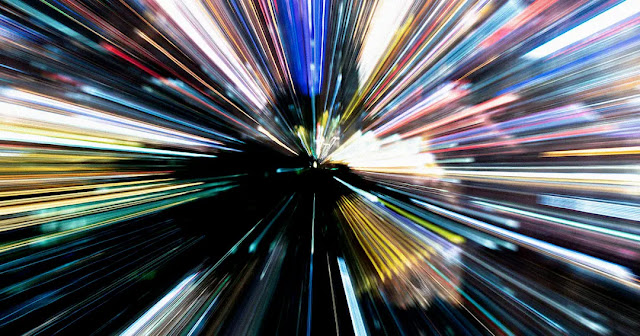We might be entirely wrong about the Big Bang.
An international team of researchers are suggesting that our
understanding of the origins of our universe may need some updates.
As detailed in a paper published in The Astrophysical
Journal Letters, they say the universe may have begun with a "Big
Bounce" rather than a Big Bang.
In other words, the cosmos may have been born following of
the end of a previous cosmological phase — a bounce — and not the result of
space-time inflating exponentially into existence.
"Inflation was theorized to explain various fine-tuning
challenges of the so-called hot Big Bang model," said first author Sunny
Vagnozzi, an astrophysicist at the University of Cambridge, in statement.
"It also explains the origin of structure in our Universe as a result of
quantum fluctuations."
But, as Vagnozzi argues, there's still a chance we can prove
the theory wrong, despite being able to rule out "individual inflationary
models."
The paper argues we should probe even deeper into the cosmic
microwave background (CMB), some of the electromagnetic remnants dating back to
the earliest stages of the universe.
The European Space Agency's Planck spacecraft began
measuring the CMB back in 2013 — and the results immediately sounded a little
suspect to the researchers.
"When the results from the Planck satellite were
announced, they were held up as a confirmation of cosmic inflation,"
Harvard University astronomer Avi Loeb, who also worked on the paper, said in
the statement. "However, some of us argued that the results might be
showing just the opposite."
But until we see the universe at it was right after the
supposed Big Bang, we won't know for sure.
"The actual edge of the observable universe is at the
distance that any signal could have travelled at the speed-of-light limit over
the 13.8 billion years that elapsed since the birth of the Universe," Loeb
said. "As a result of the expansion of the universe, this edge is
currently located 46.5 billion light years away."
"The spherical volume within this boundary is like an
archaeological dig centered on us: the deeper we probe into it, the earlier is
the layer of cosmic history that we uncover, all the way back to the Big Bang
which represents our ultimate horizon," he added. "What lies beyond
the horizon is unknown."
In short, we have to dig deeper to study the nature of the
universe right after its creation.
But even if we did get a glimpse, we'd have a hard time
predicting what came before it.
"A proper understanding of what came before that
requires a predictive theory of quantum gravity, which we do not possess,"
Loeb said.
But that reality hasn't put off the researchers. They
suggest we should be looking for the cosmic graviton background, which is made
up of freely traveling gravitons, hypothetical elementary particles that could
explain gravitational interactions.
The researchers suggest that the CGB could have existed
right around the creation of the universe. According to the Big Bang theory,
the CGB would have been diluted to the point of no longer being detectable.
Therefore, if the researchers were to detect it, they could
possibly rule out the Big Bang as a theory altogether.
However, detecting the CGB would require extremely
sophisticated technology that simply doesn't exist yet — but that hasn't
stopped them from thinking several steps ahead.





0 Comments